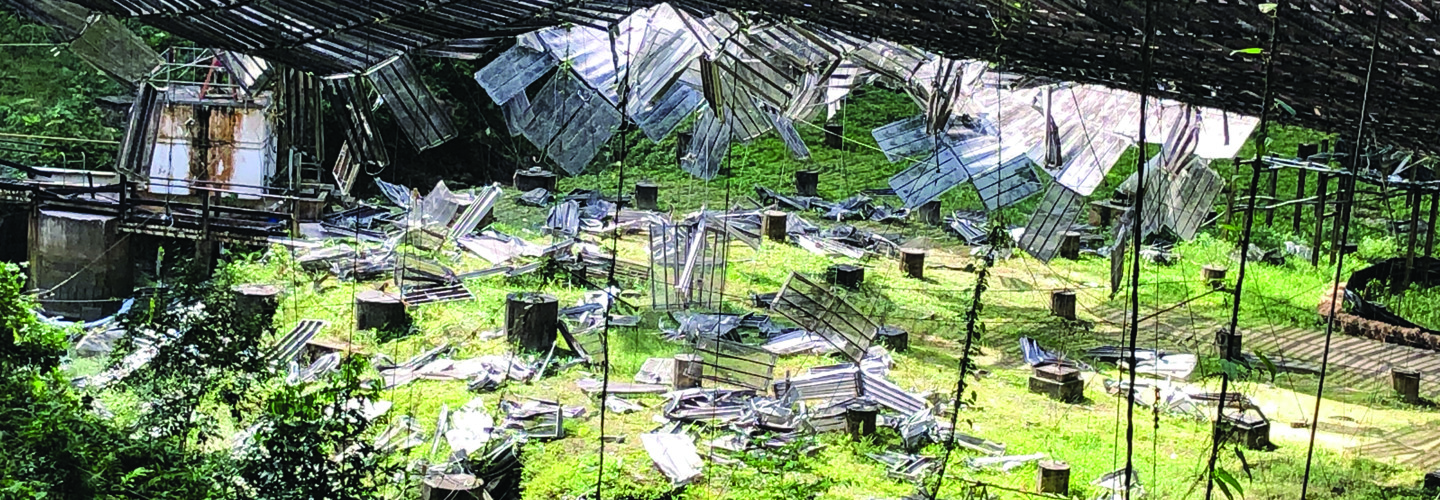Telescope Damaged, but Some Arecibo Science Continues
One of the most famous pieces of government technology, Arecibo’s radio telescope, tucked into the mountains and rainforests of central Puerto Rico, is familiar to nonscientists from appearances in GoldenEye, Contact, The X-Files and other movies and TV shows.
In its 57 years, the observatory was the source of important scientific firsts, including the Nobel Prize-winning discovery of the first binary pulsar, the first radar maps showing the surface of cloud-covered Venus and the first planets found outside our solar system. It was also a key tool in characterizing near-Earth asteroids that had been spotted by other telescopes.
Cables holding up the telescope (with a 900-ton platform) began to fail in the summer of 2020, and the NSF had already decided to decommission the damaged telescope when the cables suddenly snapped on Dec. 1 and dropped the telescope's instrument platform 450 feet into the 1,000-foot dish below it, destroying both.
The investigators attempting to pinpoint the cause expect to file draft conclusions with the NSF in September. They’re looking at possible manufacturing defects combined with damage caused by the hurricanes and earthquakes that struck Puerto Rico between 2017 and 2019, but nothing is final yet, said John Abruzzo, the forensic practices co-lead at Thornton Tomasetti, which is investigating the collapse.
Parts of the observatory campus damaged by either the collapse or the natural disasters are up and running once more, including a smaller 12-meter telescope, which can track solar ejections and other space weather events, and the lidar facility, which is used to study the atmosphere.
“Since the collapse, NSF commitment to the observatory’s future has not wavered,” NSF Director Sethuraman Panchanathan said at the opening of the virtual workshop in April.
READ MORE: Webcams allow citizens to see otherwise inaccessible federal science facilities.
New Telescope Would Outpace Chinese Competitor
“There are many exciting ideas” for Arecibo’s future, says R. Chris Smith, acting division director for NSF’s astromony section. “At this time, no one option or idea is currently favored.”
What several scientists want — and what the white paper suggests — is a telescope that will expand Arecibo’s scope and do far more than the Chinese FAST is capable of. According to those who spoke at the congressional forum, that includes the ability to:
- Provide up to seven months of warning about near-Earth asteroids, up from a few weeks
- Help non-Earth missions choose safe and appropriate landing sites
- Better spot small pieces of space junk — even pieces that are millimeters in size that could cause catastrophic damage to satellites or the International Space Station
- Point to different spots in the sky for increased visibility (the original telescope was fixed)
If the NSF uses the usual procedure for planning major research equipment and facilities construction, the process could take 20 to 30 years, Cordova said. Other planning procedures could result in a timeline of four to seven years for design and construction, depending on the availability of funding, he said.
“This is true infrastructure,” said Rep. Steven Palazzo, R-Miss., who serves on the House Committee on Appropriations and attended the congressional forum in Puerto Rico. “What you have here is a national treasure, and it needs to be protected, and it needs to be supported, and it needs to be well funded.”










